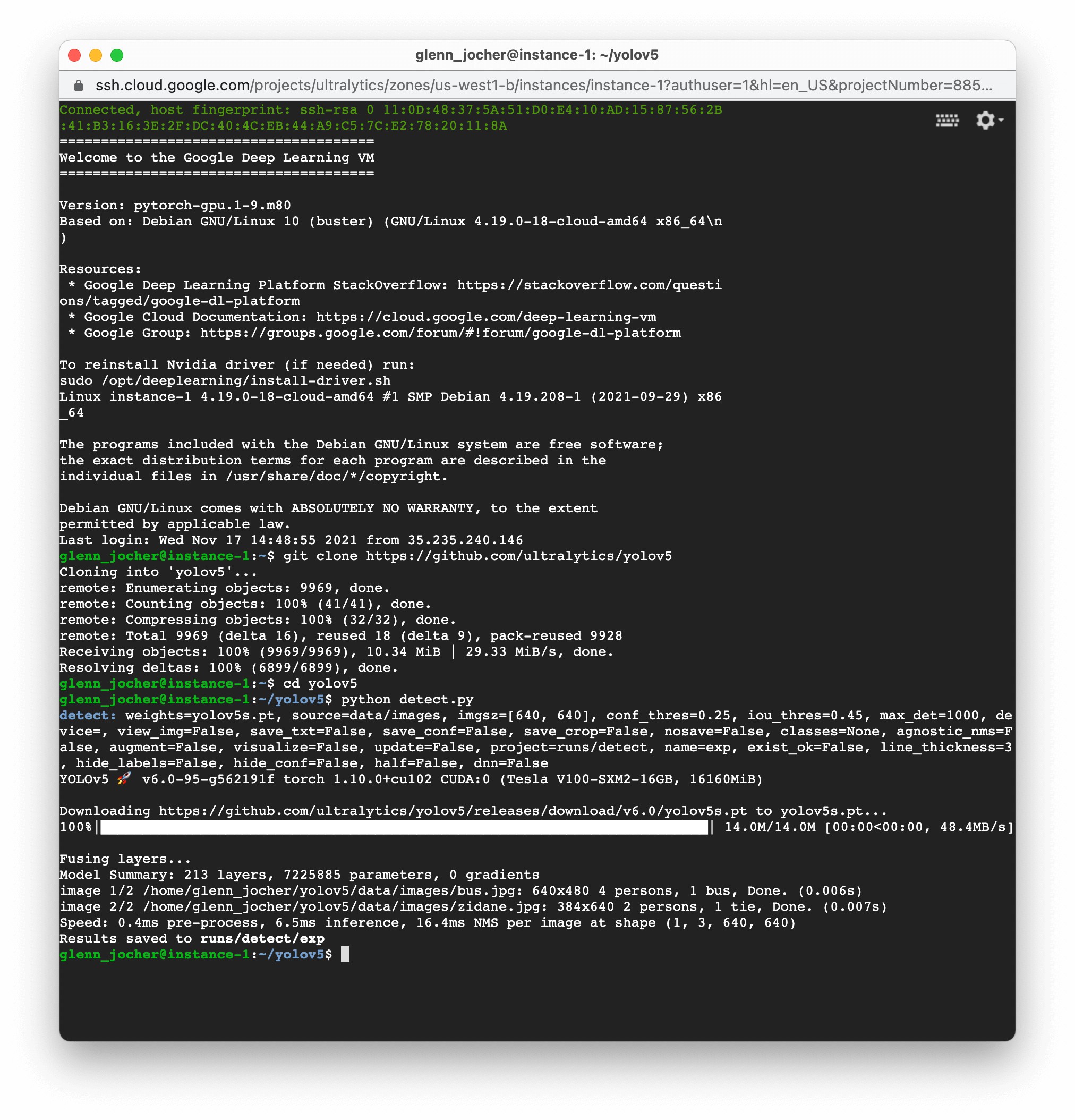You can not select more than 25 topics
Topics must start with a letter or number, can include dashes ('-') and can be up to 35 characters long.
Tag:
Branch:
Tree:
44c7c3514d
LeYOLO-Docs-Page
action-recog
action-recog2
add-checkbox
afpn
albumentations_p
annotator-overrides-for-solutions
archive/mkdocs-languages
augment-fix
autobackend-fix
background-class
base-resize
benchmark-format-args
benchmarks_vs_size
classify-visualization-fix
clean-exp-bk
cli-info
custom-formatter
dataset-error-handling
debug-windows
deepnote
dental-radiography
dependabot/pip/duckdb-lte-0.10.0
dispm-colab
docker-docs
docker-docs-major-refactor
docs-build
dos/settings-doc
error_handler
exp
exp-a
exp-b
exp-detr
exp-dfl
exp-e2e
exp-nms
exp11-e2e
exp12
exp12-arch
exp12-r2
exp_mosaic
exp_pytorch_opencl
export-args
export-batch-size
fix-benchmarks
fix-yolo-solutions-cli-ci
fps
habana
human
human-cls
imagenet-mean-stride
intel-pvc
latest-temp
lazy-imports
line-elimination
main
mct-2.1.1
meta-kwargs
mkdocs-exclude
model-epochs-fix
model_yaml_args
models-docs
multisource-docs-fix
new-cache
new-config-format
new-v11-head
nms_coreml
nms_warn
no-grad-test
nudging
onnx-fp16
onnx-providers
openimage-docs-fix
openvino-2025-0
paddle
pascal-voc-2-yolo
permutation-testing
predict-docs
prune
py-project-refactor
python-312
pytorch-model-metadata
remove-tfjs-arm64
removing-unwanted-local-code
replace-thop
resample_seg
research
results
resumeO
samurai
scipy_removal
security-test
sentry3
softnms
soln_cli
sort-args
stale-actions
test-apple-mps
test-ncnn
test-smart-inference
torch-prof
train_cache
train_coco_sam
trim-docker
types
ultralytics-beta
ultralytics-selector
uv-benchmarks-rpi
uv-check-requirements
uv-pytests
visualize_val
warmups
yolo-serve
youtube-dlp
youtube-lite
yt_badges
v8.0.100
v8.0.101
v8.0.103
v8.0.104
v8.0.105
v8.0.106
v8.0.107
v8.0.108
v8.0.109
v8.0.11
v8.0.110
v8.0.111
v8.0.112
v8.0.113
v8.0.114
v8.0.115
v8.0.116
v8.0.117
v8.0.118
v8.0.119
v8.0.12
v8.0.120
v8.0.121
v8.0.122
v8.0.123
v8.0.124
v8.0.125
v8.0.126
v8.0.127
v8.0.128
v8.0.129
v8.0.130
v8.0.131
v8.0.132
v8.0.133
v8.0.134
v8.0.135
v8.0.136
v8.0.137
v8.0.138
v8.0.139
v8.0.14
v8.0.140
v8.0.141
v8.0.142
v8.0.143
v8.0.144
v8.0.145
v8.0.146
v8.0.148
v8.0.149
v8.0.15
v8.0.150
v8.0.151
v8.0.152
v8.0.153
v8.0.154
v8.0.155
v8.0.156
v8.0.157
v8.0.158
v8.0.159
v8.0.160
v8.0.161
v8.0.162
v8.0.163
v8.0.164
v8.0.166
v8.0.167
v8.0.168
v8.0.169
v8.0.170
v8.0.171
v8.0.172
v8.0.173
v8.0.174
v8.0.175
v8.0.176
v8.0.177
v8.0.178
v8.0.179
v8.0.18
v8.0.180
v8.0.181
v8.0.182
v8.0.183
v8.0.184
v8.0.185
v8.0.186
v8.0.187
v8.0.188
v8.0.189
v8.0.19
v8.0.190
v8.0.191
v8.0.192
v8.0.193
v8.0.194
v8.0.195
v8.0.196
v8.0.197
v8.0.198
v8.0.199
v8.0.20
v8.0.200
v8.0.201
v8.0.202
v8.0.203
v8.0.204
v8.0.205
v8.0.206
v8.0.207
v8.0.208
v8.0.209
v8.0.21
v8.0.210
v8.0.211
v8.0.212
v8.0.213
v8.0.214
v8.0.215
v8.0.216
v8.0.217
v8.0.218
v8.0.219
v8.0.220
v8.0.221
v8.0.222
v8.0.223
v8.0.224
v8.0.225
v8.0.226
v8.0.227
v8.0.228
v8.0.229
v8.0.230
v8.0.231
v8.0.232
v8.0.233
v8.0.234
v8.0.235
v8.0.236
v8.0.237
v8.0.238
v8.0.239
v8.0.24
v8.0.26
v8.0.29
v8.0.30
v8.0.31
v8.0.32
v8.0.33
v8.0.34
v8.0.35
v8.0.37
v8.0.38
v8.0.39
v8.0.4
v8.0.40
v8.0.41
v8.0.42
v8.0.43
v8.0.44
v8.0.45
v8.0.46
v8.0.47
v8.0.48
v8.0.49
v8.0.5
v8.0.50
v8.0.51
v8.0.52
v8.0.53
v8.0.54
v8.0.55
v8.0.56
v8.0.57
v8.0.58
v8.0.59
v8.0.6
v8.0.60
v8.0.62
v8.0.63
v8.0.65
v8.0.67
v8.0.68
v8.0.69
v8.0.70
v8.0.71
v8.0.72
v8.0.73
v8.0.74
v8.0.75
v8.0.76
v8.0.77
v8.0.78
v8.0.79
v8.0.80
v8.0.81
v8.0.82
v8.0.83
v8.0.84
v8.0.85
v8.0.86
v8.0.87
v8.0.88
v8.0.89
v8.0.90
v8.0.91
v8.0.92
v8.0.93
v8.0.94
v8.0.96
v8.0.97
v8.0.98
v8.0.99
v8.1.0
v8.1.1
v8.1.10
v8.1.11
v8.1.12
v8.1.13
v8.1.14
v8.1.15
v8.1.16
v8.1.17
v8.1.18
v8.1.19
v8.1.2
v8.1.20
v8.1.21
v8.1.22
v8.1.23
v8.1.24
v8.1.25
v8.1.26
v8.1.27
v8.1.28
v8.1.29
v8.1.3
v8.1.30
v8.1.31
v8.1.32
v8.1.33
v8.1.34
v8.1.35
v8.1.36
v8.1.37
v8.1.38
v8.1.39
v8.1.4
v8.1.40
v8.1.41
v8.1.42
v8.1.43
v8.1.44
v8.1.45
v8.1.46
v8.1.47
v8.1.5
v8.1.6
v8.1.7
v8.1.8
v8.1.9
v8.2.0
v8.2.1
v8.2.10
v8.2.100
v8.2.101
v8.2.102
v8.2.103
v8.2.11
v8.2.12
v8.2.13
v8.2.14
v8.2.15
v8.2.16
v8.2.17
v8.2.18
v8.2.19
v8.2.2
v8.2.20
v8.2.21
v8.2.22
v8.2.23
v8.2.24
v8.2.25
v8.2.26
v8.2.27
v8.2.28
v8.2.29
v8.2.3
v8.2.30
v8.2.31
v8.2.32
v8.2.33
v8.2.34
v8.2.35
v8.2.36
v8.2.37
v8.2.38
v8.2.39
v8.2.4
v8.2.40
v8.2.41
v8.2.42
v8.2.43
v8.2.44
v8.2.45
v8.2.46
v8.2.47
v8.2.48
v8.2.49
v8.2.5
v8.2.50
v8.2.51
v8.2.52
v8.2.53
v8.2.54
v8.2.55
v8.2.56
v8.2.57
v8.2.58
v8.2.59
v8.2.6
v8.2.60
v8.2.61
v8.2.62
v8.2.63
v8.2.64
v8.2.65
v8.2.66
v8.2.67
v8.2.68
v8.2.69
v8.2.7
v8.2.70
v8.2.71
v8.2.72
v8.2.73
v8.2.74
v8.2.75
v8.2.76
v8.2.77
v8.2.78
v8.2.79
v8.2.8
v8.2.80
v8.2.81
v8.2.82
v8.2.83
v8.2.84
v8.2.85
v8.2.86
v8.2.87
v8.2.88
v8.2.89
v8.2.9
v8.2.90
v8.2.91
v8.2.92
v8.2.93
v8.2.94
v8.2.95
v8.2.96
v8.2.97
v8.2.98
v8.2.99
v8.3.0
v8.3.1
v8.3.10
v8.3.11
v8.3.12
v8.3.13
v8.3.14
v8.3.15
v8.3.16
v8.3.17
v8.3.18
v8.3.19
v8.3.2
v8.3.20
v8.3.21
v8.3.22
v8.3.23
v8.3.24
v8.3.25
v8.3.26
v8.3.27
v8.3.28
v8.3.29
v8.3.3
v8.3.30
v8.3.31
v8.3.32
v8.3.33
v8.3.34
v8.3.35
v8.3.36
v8.3.37
v8.3.38
v8.3.39
v8.3.4
v8.3.40
v8.3.43
v8.3.44
v8.3.47
v8.3.48
v8.3.49
v8.3.5
v8.3.50
v8.3.51
v8.3.52
v8.3.53
v8.3.54
v8.3.55
v8.3.56
v8.3.57
v8.3.58
v8.3.59
v8.3.6
v8.3.60
v8.3.61
v8.3.62
v8.3.63
v8.3.64
v8.3.65
v8.3.66
v8.3.67
v8.3.68
v8.3.69
v8.3.7
v8.3.70
v8.3.71
v8.3.72
v8.3.73
v8.3.74
v8.3.75
v8.3.76
v8.3.8
v8.3.9
${ noResults }
ultralytics/docs/yolov5/environments/google_cloud_quickstart_tut...
3.1 KiB
3.1 KiB
Run YOLOv5 🚀 on Google Cloud Platform (GCP) Deep Learning Virtual Machine (VM) ⭐
This tutorial will guide you through the process of setting up and running YOLOv5 on a GCP Deep Learning VM. New GCP users are eligible for a $300 free credit offer.
You can also explore other quickstart options for YOLOv5, such as our Colab Notebook


Last Updated: 6 May 2022
Step 1: Create a Deep Learning VM
- Go to the GCP marketplace and select a Deep Learning VM.
- Choose an n1-standard-8 instance (with 8 vCPUs and 30 GB memory).
- Add a GPU of your choice.
- Check 'Install NVIDIA GPU driver automatically on first startup?'
- Select a 300 GB SSD Persistent Disk for sufficient I/O speed.
- Click 'Deploy'.
The preinstalled Anaconda Python environment includes all dependencies.

Step 2: Set Up the VM
Clone the YOLOv5 repository and install the requirements.txt in a Python>=3.7.0 environment, including PyTorch>=1.7. Models and datasets will be downloaded automatically from the latest YOLOv5 release.
git clone https://github.com/ultralytics/yolov5 # clone
cd yolov5
pip install -r requirements.txt # install
Step 3: Run YOLOv5 🚀 on the VM
You can now train, test, detect, and export YOLOv5 models on your VM:
python train.py # train a model
python val.py --weights yolov5s.pt # validate a model for Precision, Recall, and mAP
python detect.py --weights yolov5s.pt --source path/to/images # run inference on images and videos
python export.py --weights yolov5s.pt --include onnx coreml tflite # export models to other formats
